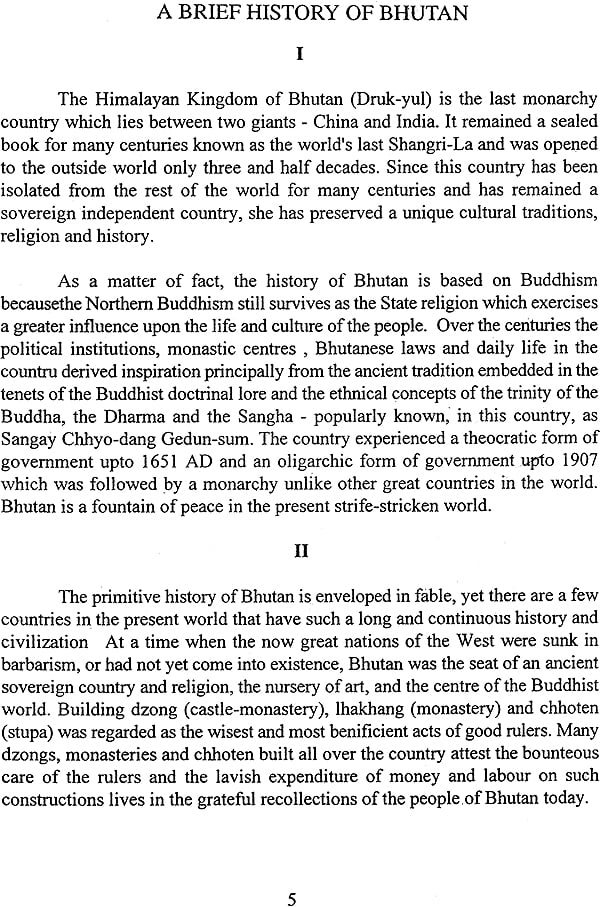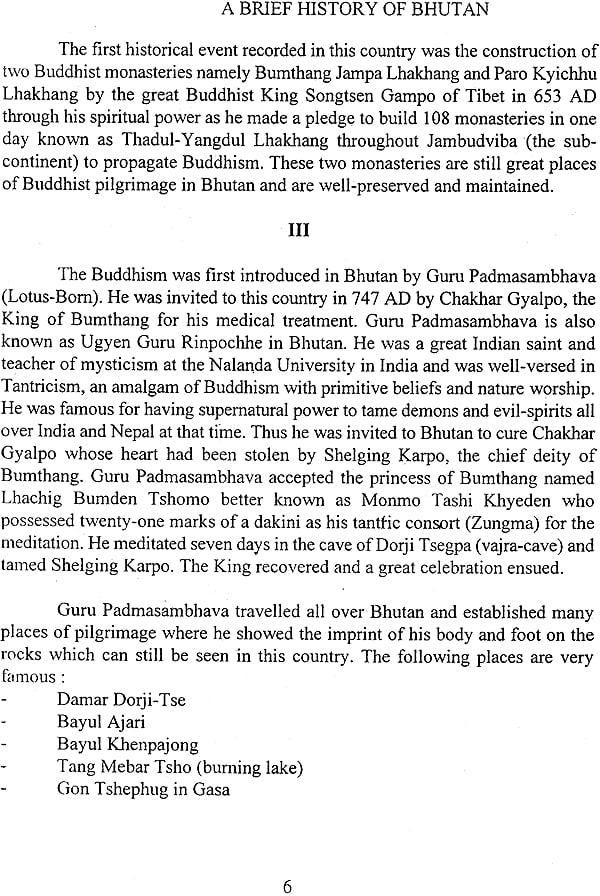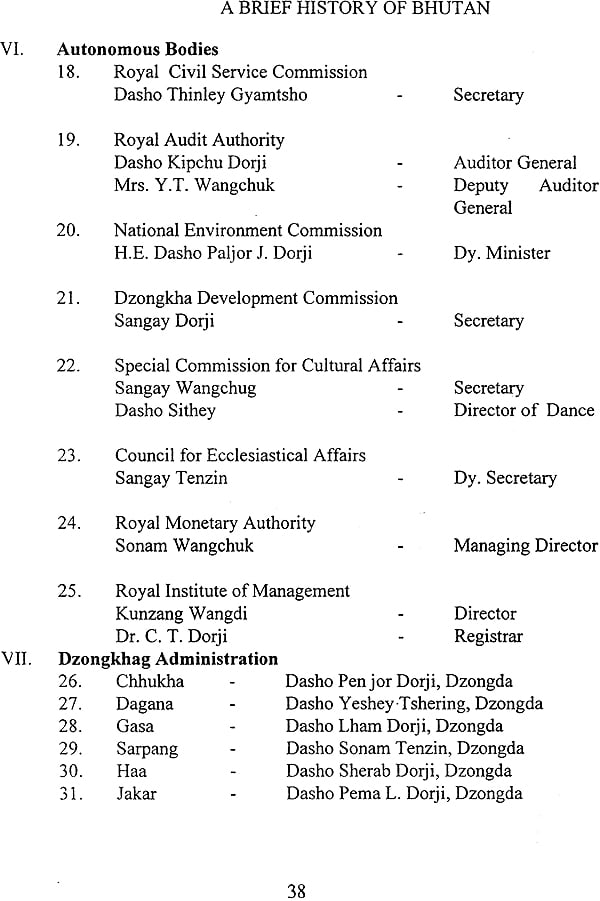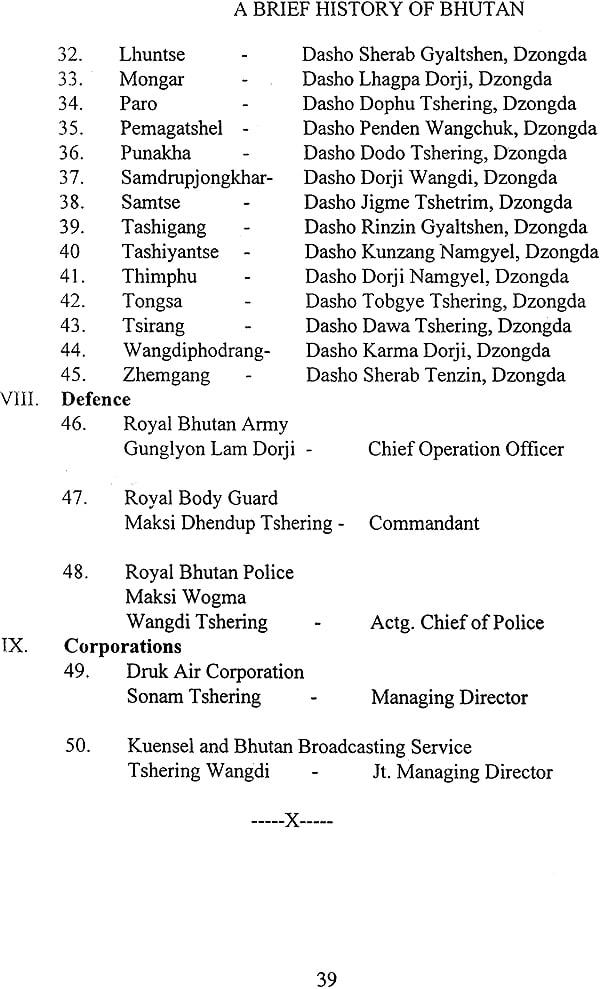
A Brief History of Bhutan
Book Specification
| Item Code: | NAM650 |
| Author: | Dr. C. T. Dorji |
| Publisher: | Prominent Publishers |
| Language: | English |
| Edition: | 1996 |
| ISBN: | 8186239049 |
| Pages: | 55 |
| Cover: | Paperback |
| Other Details | 9.5 inch x 7.5 inch |
| Weight | 130 gm |
Book Description
Dr. Chen-Kyo Tshering Dorji, civil servent, academician and historian, was born on 11 June 1949 at Uma, Bhutan. He received his early education in Bhutan as a novice. Then he went to India and studied in SUMI, Kalimpong; St. Augustine's School, Kalimpong; St. Paul's School, Darjeeling; St. Xavier's College, Calcutta and eventually he obtained a Doctorate of Philosophy at the Magadh University, Bodhgaya, India. Dr.Dorji also studied in London School of Economics & Political Science, London. He participated in many international conferences and authored An Introduction to Bhutanese Literature, A Political and Religious History of Bhutan (1651-1906) and History of Bhutan based on Buddhism.
Presently, Dr. Dorji is the Joint Director and Registrar in the Royal Institute of Management, Thimpu, Bhutan.
A Brief History of Bhutan is a gist of my thesis on which the Magadh University, Bodhgaya, India conferred the Doctorate of Philosophy on me on 25 April 1990. I have decided to bring it out as an addition to modem Bhutanese literature because only a limited amount of material has been written on Bhutan, so far, in English. This book provides a succint overall view of Bhutanese history. I hope, it will be informative and useful to the students as well as to the general reader, wishing to know the history of the Himalayan Kingdom of Bhutan.
Appendices are a list of the anterior births of Zhabdrung Ngawang Namgyel and his reincarnations, his son's reincarnations, Lam-Thripa's reincarnations, 69 Je Khenpo(s), 54 Druk Desi(s), governors, the hereditary monarchs, present structure of the Royal Government of Bhutan and Who's Who. The book concludes with a list of Bhuto-English terminology, a comprehensive chronology from 747 AD to the present day and a list of original references.
I owe special thanks to Mr. Wangdi, Mr. Kinzang Namgyel,Ms. Chirni Dolkar and my son Chenda Wangchuck for their help in various capacities. My special thanks should also go to my wife Sangay Xam and Mr. S. Mohan, proprietor of Prominent Publishers, New Delhi for publishing this book.









